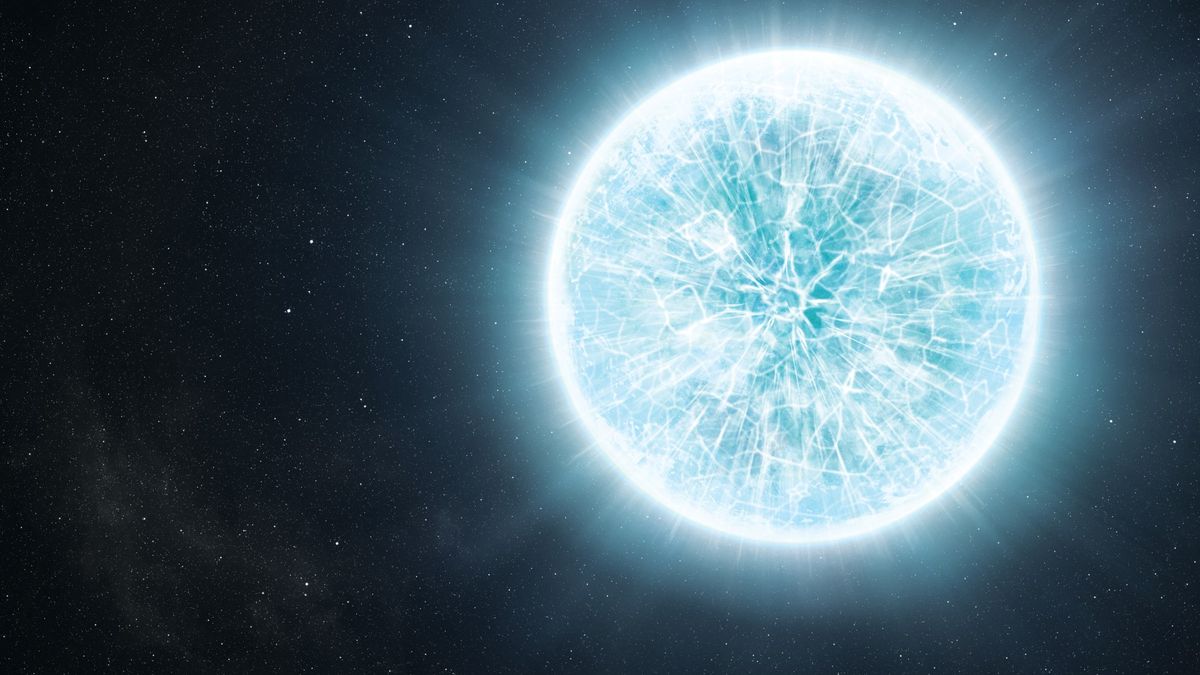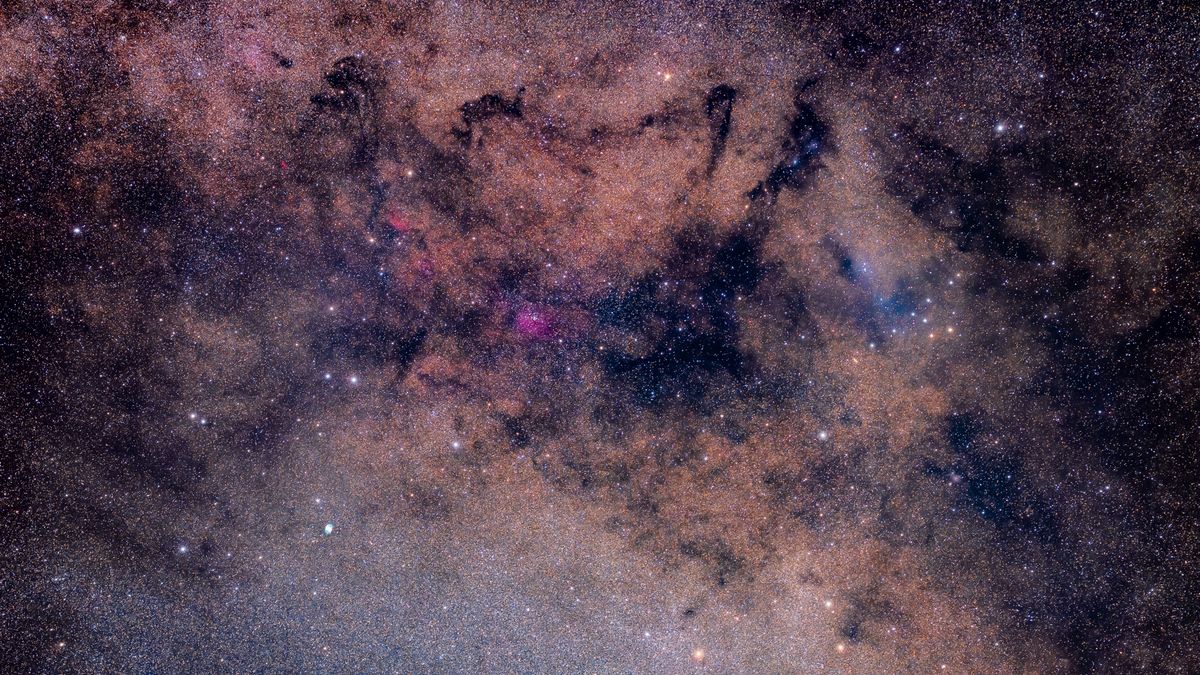Astronomers using the powerful eye of the James Webb Space Telescope have spotted a previously unknown moon whirling around Uranus, according to NASA. The discovery boosts the number of moons known to be orbiting the ice giant to 29 — and there are likely more waiting to be found.
The moon came to light through a series of 40-minute long-exposure images taken by Webb’s Near-Infrared Camera on February 2.
“It’s a small moon but a significant discovery, which is something that even NASA’s Voyager 2 spacecraft didn’t see during its flyby nearly 40 years ago,” said Maryame El Moutamid, a lead scientist in the Southwest Research Institute’s Solar System Science and Exploration Division in Boulder, Colorado, in a statement.
El Moutamid is the principal investigator of a Webb program dedicated to analyzing the structure and dynamics of the typically hidden rings and inner moons of Uranus.
The glow of Uranus’ rings and the moon’s tiny size, measuring about 6 miles (10 kilometers) in diameter, are likely what obscured it from the view of Voyager 2, the only mission that has performed flybys of Uranus and Neptune, as well as telescopes such as Hubble that have observed the solar system’s outer planets.
It’s possible that the moon and some of the material comprising Uranus’ rings have a common origin, which could mean the rings and moon are fragments resulting from the same ancient event, El Moutamid said.
The moon, temporarily named S/2025 U1, could reveal how Uranus’ rings are shaped, whether by gravity or an ancient event, to provide a window into the enigmatic rings’ structure, stability and history, she said.
“The discovery raises questions about how many more small moons remain hidden around Uranus and how they interact with its rings,” El Moutamid said.
Finding a tiny moon
The discovery of moons around planets in our solar system is not a very common occurrence, but it does happen from time around giant planets like Jupiter, Saturn, Uranus and Neptune.
“These planets have many moons, and some are so tiny and faint that we’re still discovering them,” El Moutamid said.
The newly found moon is the 14th in a system of small moons orbiting Uranus — all of which orbit closer to the planet than its largest moons: Miranda, Ariel, Umbriel, Titania and Oberon.
“It’s located about 35,000 miles (56,000 kilometers) from Uranus’ center, orbiting the planet’s equatorial plane between the orbits of Ophelia (which is just outside of Uranus’ main ring system) and Bianca,” El Moutamid said, referring to two other small moons circling the planet. “Its nearly circular orbit suggests it may have formed near its current location.”
Spotting the moon was no easy task because it is tiny, dark and moves quickly, which made it nearly invisible against the background glow of Uranus’ rings, El Moutamid said. The high resolution and sensitivity of Webb’s Near-Infrared Camera was perfectly suited to find a faint, distant object, she said.
Webb’s ability to capture infrared light, invisible to the human eye, has also provided glimpses of Uranus’ rings and moons, atmosphere and weather during earlier observations.
“Its detection highlights both the dynamic complexity of Uranus’s system and the sharp eyes of modern astronomy.”
Uranus' icy moon Miranda is seen in this image from Voyager 2 on January 24, 1986. - NASA/JPL-Caltech
So far, all of Uranus’ moons have been named for characters from the works of William Shakespeare and Alexander Pope.
The previously unknown moon doesn’t have a literary name yet, and the International Astronomical Union, which assigns official names to celestial objects, will need to approve one.
Part of the difficulty in determining just how many moons orbit Uranus is the proximity of these natural satellites to the planet and the bright glare of the planet itself, said Scott Sheppard, astronomer at the Carnegie Institution for Science in Washington, DC. Sheppard was not involved in the new observations but helped discover a Uranus moon in 2024.
“This new Uranus moon is a very exciting find since it is so close to Uranus and likely associated with the inner ring system,” Sheppard said. “This discovery shows the power of the James Webb Space Telescope to be able to image deeper than we ever have before.”
A growing collection of satellites
No other planet has as many small inner moons as Uranus, said coprincipal investigator Matthew Tiscareno, a senior research scientist of solar system dynamics and planetary rings at the SETI Institute in Mountain View, California. Astronomers don’t quite know how the diminutive moons have avoided crashing together because they’re so close to one another, but the satellites may act as shepherds for Uranus’ narrow rings, according to NASA.
“Their complex inter-relationships with the rings hint at a chaotic history that blurs the boundary between a ring system and a system of moons,” Tiscareno said in a statement. “Moreover, the new moon is smaller and much fainter than the smallest of the previously known inner moons, making it likely that even more complexity remains to be discovered.”
Before Voyager 2’s groundbreaking views of Uranus in 1986, only five moons — its largest — had been spotted orbiting the planet, with the first two discovered in 1787 and the fifth in 1948.
Voyager 2 found 10 moons during its flyby, ranging from 16 to 96 miles (26 to 154 kilometers) in diameter. Hubble and ground-based telescopes have spotted an additional 13 tiny moons, which range from 8 to 10 miles (12 to 16 kilometers) across and appear darker than asphalt, according to NASA. While the inner moons appear to be made of ice and rock, the moons beyond Oberon are likely asteroids captured in orbit around Uranus, according to the space agency.
“Looking forward, the discovery of this moon underscores how modern astronomy continues to build upon the legacy of missions like Voyager 2, which flew past Uranus on Jan. 24, 1986, and gave humanity its first close-up look at this mysterious world,” El Moutamid said in her statement. “Now, nearly four decades later, the James Webb Space Telescope is pushing that frontier even farther.”
Future Uranus exploration missions planned for the early 2030s, which include an orbiter and an atmospheric probe, could also help astronomers understand the ice giant like never before.
Webb’s Near-Infrared Camera captured an image of the new moon as well as 13 of the other 28 known moons. - NASA, ESA, CSA, STScI, M. El Moutamid (SwRI), M. Hedman (University of Idaho)
An overdue exploration
Uranus has largely been defined by data gathered during Voyager 2’s flyby, but another, more detailed visit to the ice giant, which rotates on its side, is overdue to shed light on the planet’s atmospheric dynamics, complex magnetic field and what led to the creation of its extreme tilt and rings. Detailed observations could also reveal whether any of Uranus’ moons are ice-covered ocean worlds.
The planetary decadal survey, authored by the National Academies of Sciences, Engineering, and Medicine in 2022, recommended the first dedicated Uranus Orbiter and Probe as the next large NASA mission. Currently, it’s unclear where the mission fits into NASA’s future plans, especially as the agency grapples with the White House’s proposal to slash NASA’s science budget by as much as half.
Sheppard said there are surely more undiscovered Uranus moons that are only a few kilometers in size, but they would be even fainter than the newly detected moon and even harder to find.
“New moons will likely be found either by taking extremely long images with JWST or a future Uranus spacecraft mission,” Sheppard said.
Next, El Moutamid and her team want to uncover more details about the new moon’s orbit, search for additional moons and support any planning for the Uranus Orbiter and Probe mission.
“Discovering a new moon around Uranus helps scientists better understand how its strange system formed, sheds light on its rings, and prepares us for future missions like NASA’s Uranus Orbiter and Probe,” El Moutamid said.
Sign up for CNN’s Wonder Theory science newsletter. Explore the universe with news on fascinating discoveries, scientific advancements and more.
For more CNN news and newsletters create an account at CNN.com
.png)
 German (DE)
German (DE)  English (US)
English (US)  Spanish (ES)
Spanish (ES)  French (FR)
French (FR)  Hindi (IN)
Hindi (IN)  Italian (IT)
Italian (IT)  Russian (RU)
Russian (RU) 








Comments